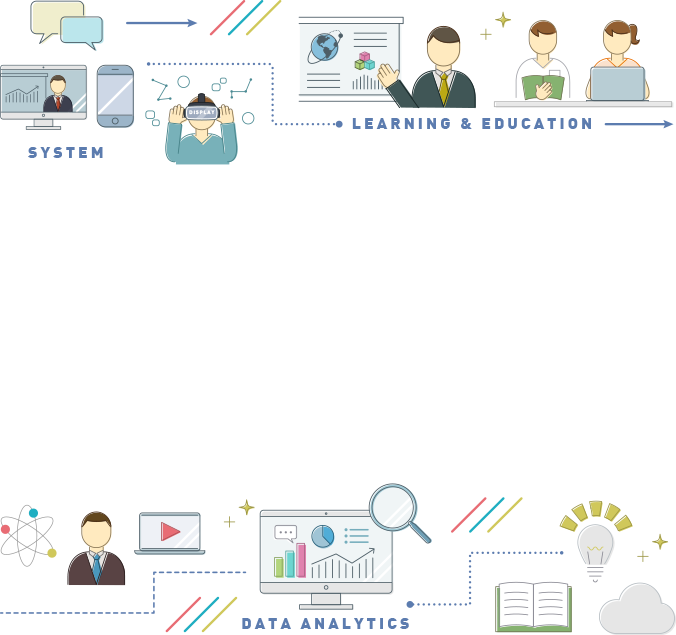Hello, I am Saki Hirata, an M2 student in Yamada Laboratory.
In our English literature seminar, we recently reviewed the following paper:
Title: Effects of Internal and External Conditions on Strategies of Self-regulated Learning: A Learning Analytics Study
Authors: Srivastava, N and Fan, Y. et al (and 11 others)
Conference: LAK2022, March 21–25, 2022, Online, USA, Pages 392–403, https://doi.org/10.1145/3506860.3506972
This paper was presented at the Learning Analytics and Knowledge Conference (LAK) 2022, an international event focused on learning analytics research. The study investigates self-regulated learning (SRL) strategies by analyzing trace data collected from digital learning environments. It aims to understand how learners regulate their learning processes and whether these strategies correlate with learning outcomes, prior knowledge, motivation, and scaffolding.
Self-regulated learning involves learners optimizing their learning by monitoring and regulating their own learning process. The study proposes a method for analyzing SRL strategies using trace data, which captures various learning actions such as button presses, mouse movements, and gaze analysis. These actions provide insights into learners’ strategies and behaviors.
Using Winne and Hadwin’s COPES model of SRL, the study explores how learners monitor, manage, and evaluate their learning in digital environments, considering factors like pre-existing knowledge, motivation, and external aids such as scaffolding.
The research questions addressed in the study are as follows:
1. What are self-regulated learning process-based strategies during an essay assignment?
2. To what extent do self-regulated learning strategies predict learning outcomes in essay writing assignments?
3. Is there a relationship between learners’ pre-existing knowledge, metacognitive knowledge, motivational status, scaffolding, and self-regulated learning strategies?
The study involved 253 students enrolled in a graduate academic writing course, with 173 participants included in the analysis. Participants completed a final writing assignment within a Moodle-based learning environment, with scaffolding interventions categorized into control, generalized, and personalized groups.
Data analysis involved the development of a protocol for extracting SRL strategies from trace data, categorizing learning behaviors into seven self-regulated learning behaviors, and generating a first-order Markov model to validate learners’ SRL strategies. Statistical tests, including ANOVA, Kruskal-Wallis, and chi-square tests, were conducted to examine the relationships between SRL strategies, learning outcomes, and prior knowledge.
The study identified three SRL strategies during the essay assignment: “Read First, Write Next,” “Read and Write Simultaneously,” and “Write Intensively, Read Selectively.” However, no significant differences were found in learning outcomes among these strategies or in relation to prior knowledge and scaffolding conditions.
In conclusion, while the study provides valuable insights into SRL strategies in digital learning environments, further research is needed to explore the relationship between these strategies, scaffolding, and learning outcomes. Future studies could consider conducting interviews to gain deeper insights into learners’ chosen approaches and logically explaining how learning behaviors map to the SRL process.
I found this paper to be highly beneficial in terms of its methods and statistical analyses for examining learning strategies using trace data. Given my research focus on collecting and analyzing data from digital learning environments, I am particularly interested in adopting the method of mapping common self-regulated learning strategies from tracing data, as demonstrated in this study.
However, while the paper extensively explored the relationship between self-regulated learning strategies and various factors such as learning outcomes, prior knowledge, and scaffolding, I am curious about the potential interaction effects between self-regulated learning strategies and scaffolding conditions on learning outcomes. Therefore, I believe it would be intriguing to conduct a two-factor analysis of variance to investigate how learning outcomes are influenced by both scaffolding and strategies.
Furthermore, after our discussion in the lab following the paper review, we concluded that it is crucial to logically explain how the observed learning behaviors map to the self-regulated learning process. To enhance the robustness of our findings, we proposed conducting interviews with participants to gain deeper insights into their chosen learning approaches. Additionally, delving deeper into the reasons behind their selected strategies could provide valuable qualitative data to complement our quantitative analyses.
Overall, I believe that further exploration along these lines will contribute significantly to our understanding of self-regulated learning in digital learning environments and pave the way for more nuanced and effective instructional strategies.







